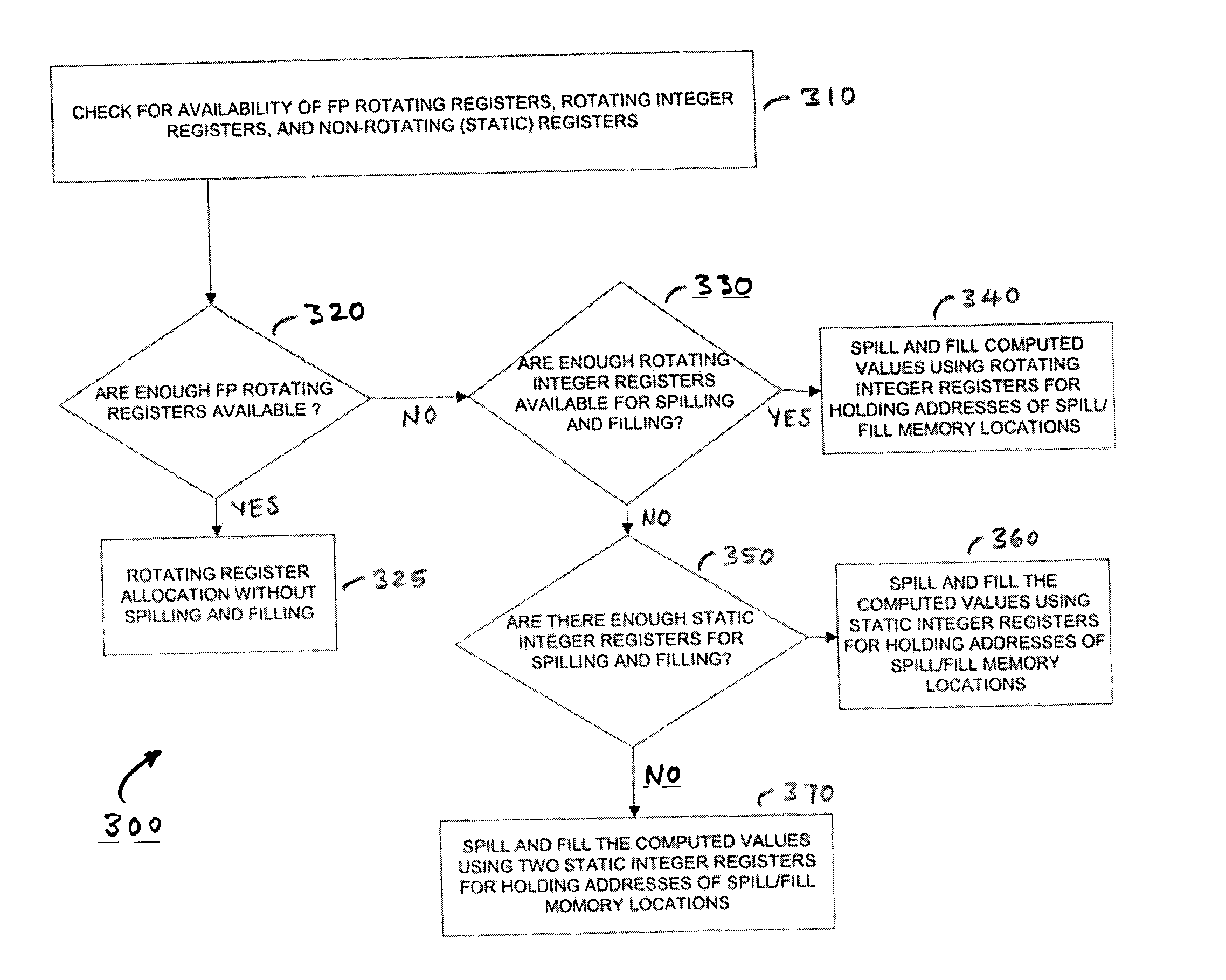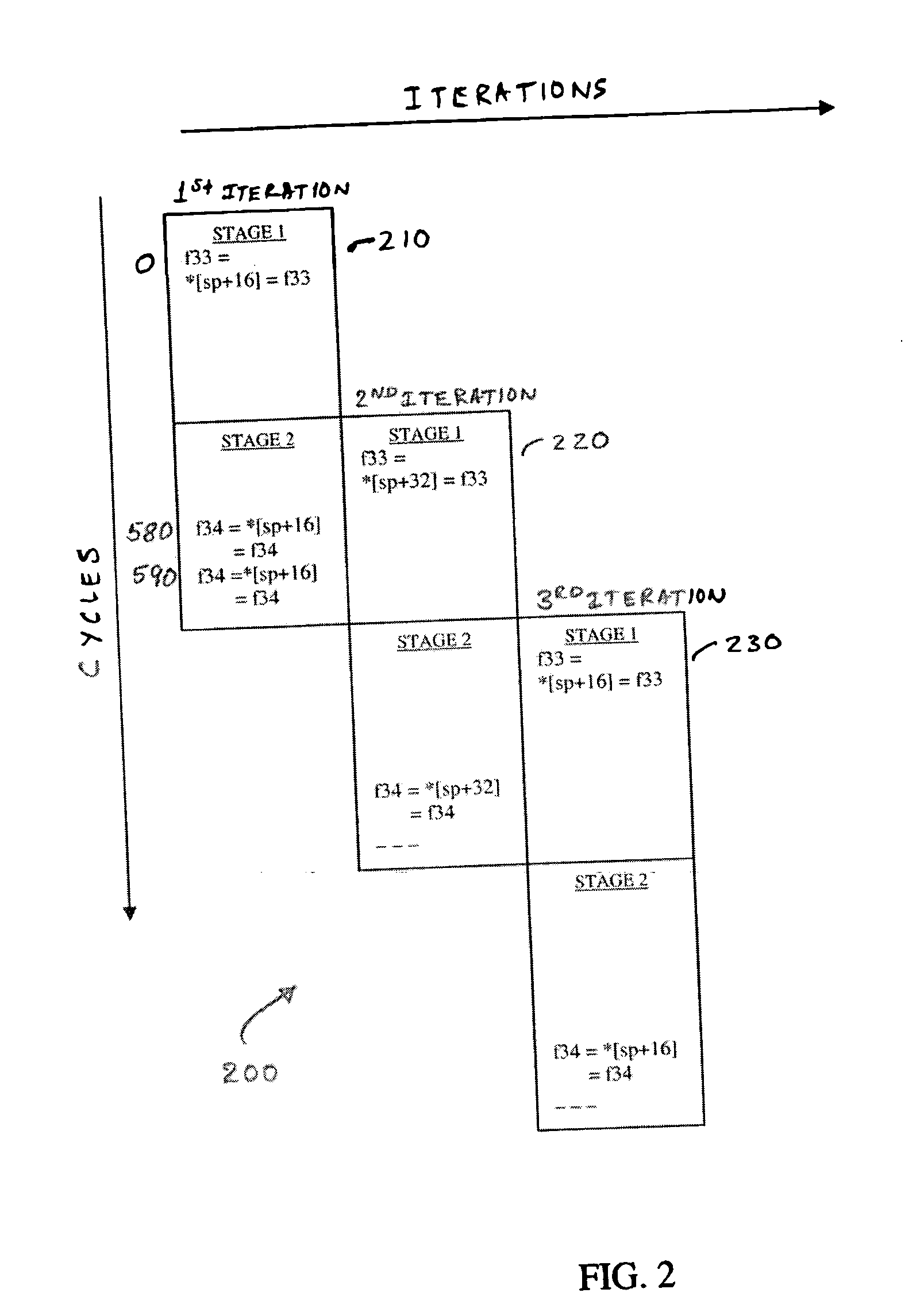System, method, and apparatus for spilling and filling rotating registers in software-pipelined loops
a software-pipelined loop and rotating register technology, applied in the field of computers, can solve the problems of large loops running out of rotating registers, increasing ii, increasing compile time of swp, and limiting the applicability of subject matter
- Summary
- Abstract
- Description
- Claims
- Application Information
AI Technical Summary
Benefits of technology
Problems solved by technology
Method used
Image
Examples
Embodiment Construction
[0014] The present subject matter provides novel apparatus, methods, and computer programs for spilling and filling of rotating registers in software-pipelined loops to reduce Initiation Interval (II), compile-time of software-pipelining (SWP), and / or complexity of implementation of SWP.
[0015] In the following detailed description of the embodiments of the subject matter, reference is made to the accompanying drawings that form a part hereof, and in which is shown, by way of illustration, specific embodiments in which the subject matter may be practiced. These embodiments are described in sufficient detail to enable those skilled in the art to practice the subject matter, and it is to be understood that other embodiments may be utilized, and that changes may be made without departing from the scope of the present subject matter. The following detailed description is, therefore, not to be taken in a limiting sense, and the scope of the present subject matter is defined only by the a...
PUM
 Login to View More
Login to View More Abstract
Description
Claims
Application Information
 Login to View More
Login to View More - R&D
- Intellectual Property
- Life Sciences
- Materials
- Tech Scout
- Unparalleled Data Quality
- Higher Quality Content
- 60% Fewer Hallucinations
Browse by: Latest US Patents, China's latest patents, Technical Efficacy Thesaurus, Application Domain, Technology Topic, Popular Technical Reports.
© 2025 PatSnap. All rights reserved.Legal|Privacy policy|Modern Slavery Act Transparency Statement|Sitemap|About US| Contact US: help@patsnap.com



